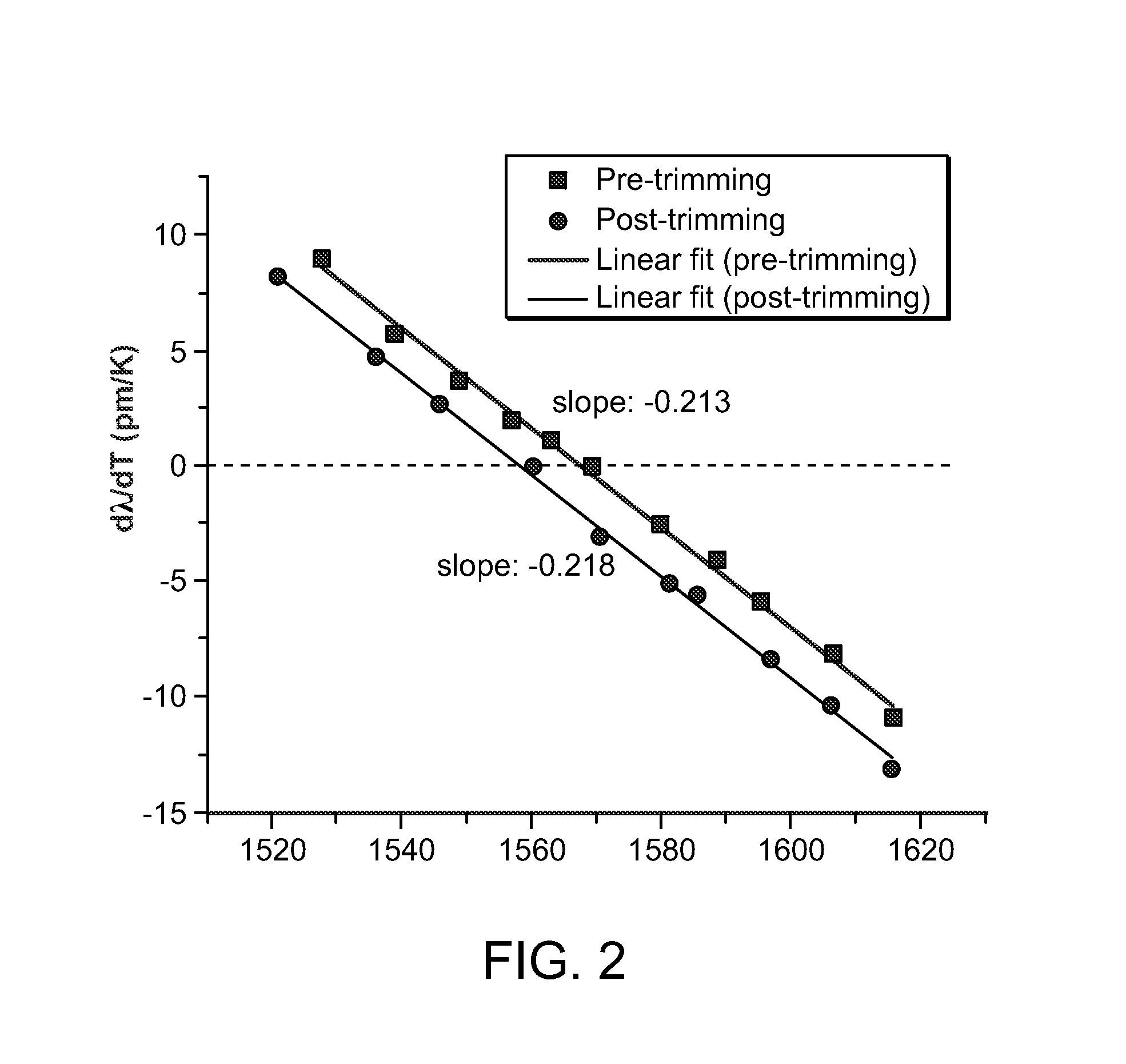Athermal Photonic Waveguide With Refractive Index Tuning
a photonic waveguide and refractive index technology, applied in the field of photonic waveguides, can solve the problems of temperature excursions that can prove problematic for silicon-based photonics, failure to achieve the production and operation of such platforms, and impose severe process constraints on integrated photonic devices. achieve the effect of reducing the need for active power-consuming compensation techniques
- Summary
- Abstract
- Description
- Claims
- Application Information
AI Technical Summary
Benefits of technology
Problems solved by technology
Method used
Image
Examples
example i
[0054]The waveguide structure of FIG. 1A was microfabricated as a racetrack resonator structure as in FIG. 1B. The closed loop 26 of the resonator had a bending radius of 20 μm and was disposed adjacent to a bus waveguide 28, with a coupling length of 100 μm and a gap of 600 nm in the coupling section. The waveguide structure was microfabricated with an amorphous waveguide core of 500 nm×205 nm and 205 nm in thickness, on a 3 μm-thick SiO2 undercladding layer, atop a silicon substrate. A photo-sensitive refractive index tuning cladding layer of As2S3, with 50 nm in thickness, was provided on the waveguide core, and a TO compensation cladding layer of the commercially available polymer EP, from Enablence, Inc., with 3 μm in thickness was provided on the index tuning cladding layer. The structure was annealed in the manner described above.
[0055]The operation of the resulting photonic device was investigated before and after exposing the structure to illumination to tune the refractive...
example ii
[0058]The rate of refractive index tuning of the photo-sensitive chalcogenide As2S3 was investigated. Three refractive index cladding layers of As2S3 were separately formed, having thicknesses of 20 nm, 30 nm, and 50 nm on the waveguide structure of FIGS. 1A-1B. The devices with various thicknesses of As2S3 were to visible light radiation from a halogen lamp that was coupled to an optical fiber controllably disposed on the material. The magnitude of each device's resonant wavelength change induced by the photo-induced refractive index change was examined as a function of exposure time. FIG. 3 is a plot of such for each of the three different material thickness devices. As seen by the plot, the magnitude of wavelength change is higher for a thinner As2S3 for a given exposure time. In other words, the magnitude of index change is inversely proportional to the thickness, where ΔnAs2S3 / nAs2S3=×tAs2S3 / tAs2S3 for a given exposure dosage. The observed blue-shift in the resonance wavelength...
PUM
 Login to View More
Login to View More Abstract
Description
Claims
Application Information
 Login to View More
Login to View More - R&D
- Intellectual Property
- Life Sciences
- Materials
- Tech Scout
- Unparalleled Data Quality
- Higher Quality Content
- 60% Fewer Hallucinations
Browse by: Latest US Patents, China's latest patents, Technical Efficacy Thesaurus, Application Domain, Technology Topic, Popular Technical Reports.
© 2025 PatSnap. All rights reserved.Legal|Privacy policy|Modern Slavery Act Transparency Statement|Sitemap|About US| Contact US: help@patsnap.com



